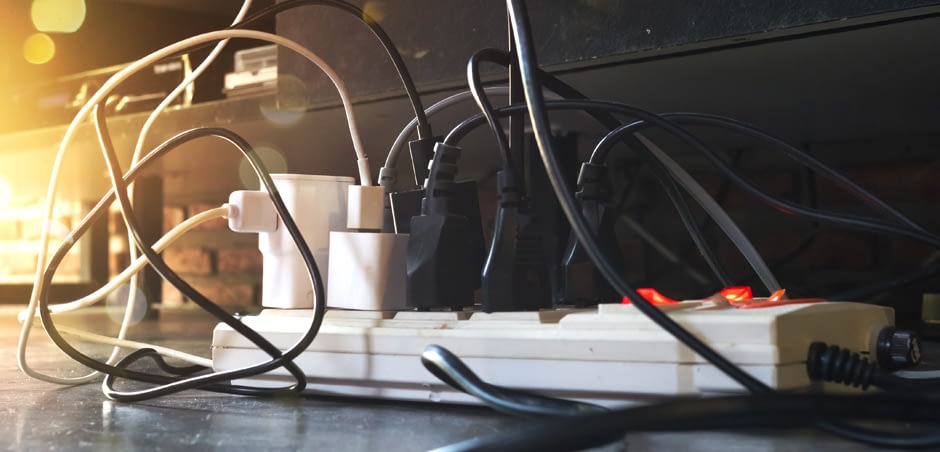Your Quick and Easy Guide to Electrical Safety at Home

Electrical dangers are serious business. From risk of shock to potential fires, you’ve got plenty of reasons to make sure your home’s electrical systems are in good shape and safe working order. Fortunately, in most houses, a simple walkthrough can help you identify and avoid the most common risks. (Having the right homeowners insurance can provide peace of mind, too.)
Most fixes are simple and inexpensive, if not free. Take a few minutes and see for yourself whether any of your rooms require attention. Let’s start with…
Outlets and switches
Outdated or mis-wired outlets and switches are not only annoying, but dangerous. Here’s what you can do:
- Make sure all outlets and switches have faceplates. Faceplates aren’t just for looks. Without them, you’ll have exposed wires that can shock or cause fires. Replace any missing faceplates, even if they are behind furniture or otherwise out of the way.
- Protect kids. All outlets should have safety covers. Or better yet, consider an upgrade to tamper resistant receptacles, which offer built-in protection against curious little ones. (They also look nice.)
- Check outlets for signs of wear. If an outlet has burn marks or is hot to the touch, that’s not good. Consult an electrician to get to the bottom of the problem. It could be a bad outlet or a sign of an underlying issue.
- Make sure switches and outlets work. You can test with a portable lamp or a nightlight. If an outlet isn’t delivering power or a switch isn’t working consistently, it may be a sign of something serious. An electrician can help you make sure that you correct any unsafe wiring, often as simple as a loose screw or worn-out switch.
Extension cords and power strips
When it comes to extension cords and anything that allows you to expand how many things are plugged into a single outlet, use them sparingly. Here’s what you can do:
- Avoid extension cords. If possible, relocate items close enough to outlets to avoid extension cords altogether. If you can’t avoid them, make sure to use them sparingly and temporarily. Extension cords aren’t meant to be used long-term, so you may want to consider adding extra outlets to your rooms. And don’t forget to unplug the cord when it’s not in use.
- If you really need one, know what to check. If an extension cord can’t be avoided, make sure that it’s in good working order and free of visible damage. Don’t run extension cords under rugs or put heavy weight on top—they can be crushed and become fire or shock hazards. Also make sure that your extension cord is not wrapped tightly around or secured to anything (with staples or nails, for example).
- Use power strips cautiously. Never plug multiple power strips into one outlet, or into one another. Don’t overload the power strip and watch out for heat. If your power strip is hot, reduce the number of items plugged into it. Experts recommend that power strips should be for temporary use only.
The kitchen
Most house fires start with the kitchen, which may not be surprising. But while most of us think of a splatter of grease or an overcooked roast as likely sources of flames and smoke, your electrical appliances can also be culprits. Here’s what you can do:
- Steer clear of the sink. Relocate small appliances, such as coffee makers and blenders, away from the sink. If they—or the outlet they are plugged in to—can be splashed with water, that’s a shock hazard. A Ground Fault Circuit Interrupter (GFCI) – that’s the thing with the “test” and “reset” buttons – will also reduce the risk in areas where water is a concern.
- Watch your wiring. Ensure large appliances are plugged in correctly and properly wired. Plugs should reach outlets without stretching or straining and insert firmly. If anything is amiss or if you’ve ever received even a light shock from touching an appliance such as an electric stove or dishwasher, consult an electrician right away.
- Unplug items not in use. Unattended appliances, such as a toaster or juicer, can lead to fire, even when no one is using them. To reduce your risk, simply unplug unused items until you need them.
Bathrooms
With moist air and running water in a tight space, bathrooms can be dangerous when it comes to electricity. Here’s what you can do:
- Unplug it! Just like in the kitchen, you should unplug unused appliances, such as an electric toothbrush or hair dryer, when not in use. In addition to the risk of fire, these can be a major shock hazard if knocked into a sink or bathtub while plugged in.
- Avoid portable heaters. The presence of water, steam and a variety of conductive metal materials make these a real danger in a bathroom. Having a fixed heating fan installed is a safer solution. (You can find a list of space heater safety tips in this blog post.)
- Add GFCIs. Since most bathroom outlets aren’t far from running water, GFCIs are a must.
Elsewhere
Other spots in and around your home—think basement, garage and outdoor areas—can have their own electrical hazards. Here’s what you can do:
- Check your fuse box or circuit breaker. Make sure that all fuses or circuits are in place and that fuses are the correct size.
- Consider arc fault circuit breakers. These are a good fit for bedrooms to help you rest easy at night. They act in a similar fashion to GFCIs by sensing a short or overload and quickly shutting off the power.
- Test your GFCI circuits, especially outdoors or near sources of water. Simply use the “test” and “reset” buttons to make sure they are working properly, particularly if you have outlets that are exposed to the elements.
- Know when to call a pro. If you frequently blow fuses or trip breakers, contact an electrician to find the underlying problem.
Want more spring cleaning tips? Learn how to organize your garage or how to clean your dryer vent.
A simple walkthrough of your home can uncover much of what made this list, or at the very least give you the peace of mind that you’ve done your homework. Shock and fire can happen any time. If you see an issue, or even just suspect one, act today.
Protect Your Home With Homeowners Insurance
While you’re looking out for your home, we’re looking out for you. Learn more about homeowners insurance from our agents, or talk to a local agent in your neighborhood.
ERIE® insurance products and services are provided by one or more of the following insurers: Erie Insurance Exchange, Erie Insurance Company, Erie Insurance Property & Casualty Company, Flagship City Insurance Company and Erie Family Life Insurance Company (home offices: Erie, Pennsylvania) or Erie Insurance Company of New York (home office: Rochester, New York). The companies within the Erie Insurance Group are not licensed to operate in all states. Refer to the company licensure and states of operation information.
The insurance products and rates, if applicable, described in this blog are in effect as of January 2024 and may be changed at any time.
Insurance products are subject to terms, conditions and exclusions not described in this blog. The policy contains the specific details of the coverages, terms, conditions and exclusions.
The insurance products and services described in this blog are not offered in all states. ERIE life insurance and annuity products are not available in New York. ERIE Medicare supplement products are not available in the District of Columbia or New York. ERIE long term care products are not available in the District of Columbia and New York.
Eligibility will be determined at the time of application based upon applicable underwriting guidelines and rules in effect at that time.
Your ERIE agent can offer you practical guidance and answer questions you may have before you buy.

A better insurance experience starts with ERIE.
Haven’t heard of us? Erie Insurance started with humble beginnings in 1925 with a mission to emphasize customer service above all else. Though we’ve grown to reach the Fortune 500 list, we still haven’t lost the human touch.
Contact McConkey Insurance Agency today to experience the ERIE difference for yourself.
